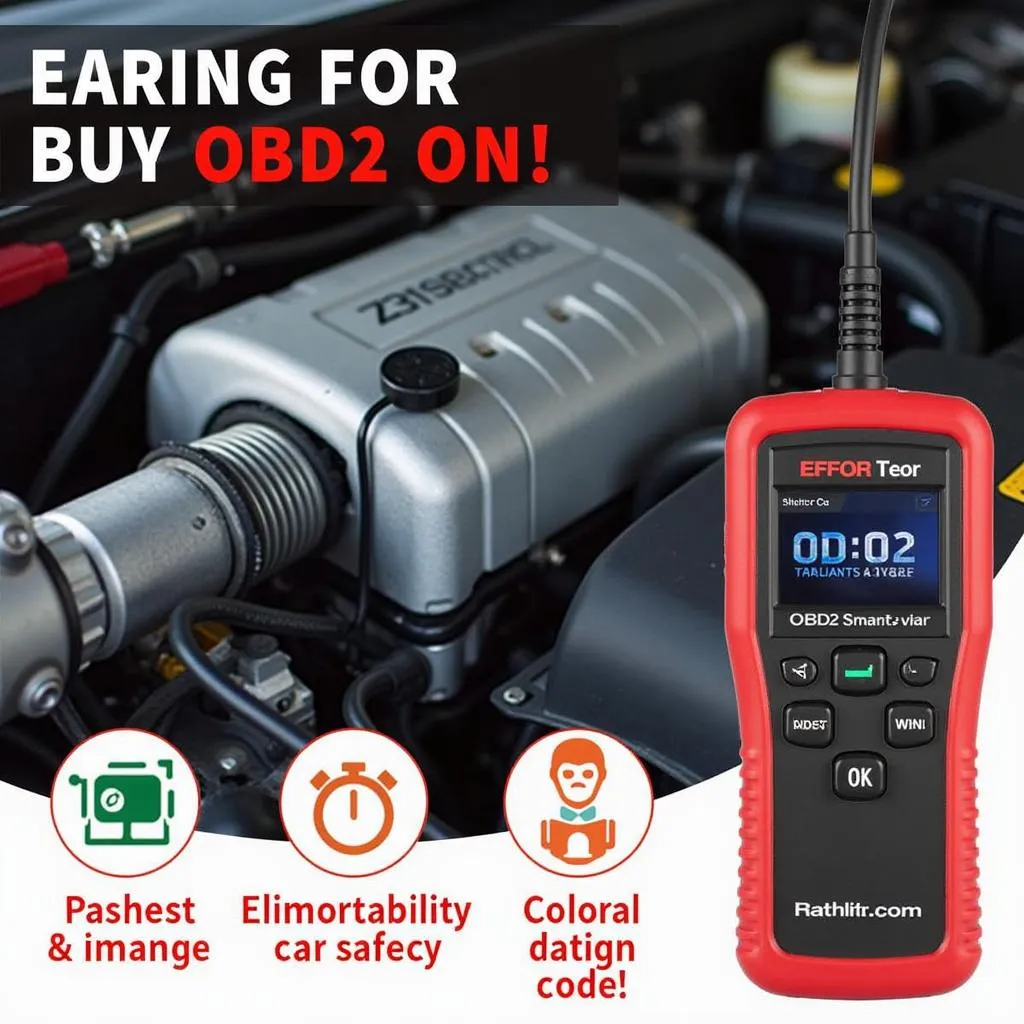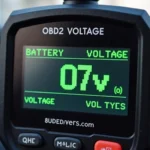Experiencing frustration because your OxGord OBD2 scanner tool won’t erase those pesky check engine lights? You’re not alone. This is a common issue faced by car owners using OBD2 scanners, and we’re here to guide you through the possible reasons and effective solutions.
Understanding Why Your OxGord OBD2 Scanner Can’t Erase Codes
Several factors might be preventing your OxGord OBD2 scanner from clearing the diagnostic trouble codes (DTCs) in your car’s system. Let’s delve into the most frequent culprits:
1. Persistent Car Issues
Sometimes, the issue isn’t with your scanner, but with your car itself. If the underlying problem triggering the check engine light hasn’t been fixed, the codes may not clear.
For instance, if a faulty oxygen sensor is the root cause, replacing the sensor is crucial before attempting to erase the code.
2. Faulty OBD2 Scanner Connection
A poor connection between your OxGord scanner and your car’s OBD2 port can hinder communication, preventing code erasure.
Ensure the scanner is firmly plugged in and check for any bent or damaged pins on both the scanner connector and the car’s OBD2 port.
3. Outdated OxGord Scanner Software
Outdated software can sometimes lead to compatibility issues with your car’s computer system, affecting the code erasing function.
Check the OxGord website for any available firmware updates for your specific scanner model.
4. Vehicle Battery Issues
A weak or failing car battery can disrupt the communication between the scanner and the car’s computer, hindering the code erasing process.
Make sure your car battery is fully charged and in good working order.
Troubleshooting Steps for OxGord OBD2 Scanner Code Erasure Issues
If your OxGord OBD2 scanner isn’t erasing codes, follow these steps:
- Verify the Check Engine Light is Still On: Sometimes, the issue might have resolved itself, and the light remains on simply because the code hasn’t been cleared. Try erasing the codes again to see if the light turns off.
- Double-Check the Connection: Ensure your OxGord scanner is securely connected to the OBD2 port.
- Turn the Ignition On: Turn the ignition to the “on” position without starting the engine. This powers up the OBD2 system for communication with the scanner.
- Follow the Scanner’s Instructions: Refer to your OxGord scanner’s user manual for the specific steps to erase codes. Models may vary slightly in their operation.
When to Seek Professional Help
If the issue persists despite following these steps, it’s recommended to seek professional assistance.
A qualified mechanic possesses the knowledge and tools to diagnose and address more complex car problems that your OxGord scanner might not be equipped to handle.
Conclusion
Encountering issues when trying to erase codes with your OxGord OBD2 scanner can be frustrating, but understanding the common causes and following the recommended troubleshooting steps can help you overcome this hurdle.
Remember, if the problem persists, don’t hesitate to seek professional help to ensure your vehicle is properly diagnosed and repaired.


